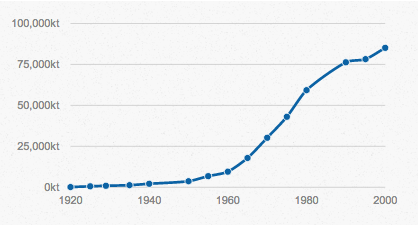
On a brown, August-dry field in Eastern Washington, a farmer in a combine cuts a 24-foot swath across a field of wheat. The harvested grain then begins a journey, first to the storage bin, then to the local elevator, on rail to a flour mill, by truck to a bakery, by oven to bread, and by car to a home where it is eaten. This is good; our foremost mandate to agriculture is to produce food. However, with this successful export of food from farm fields to nearby and distant cities comes a problem: the nutrients in the bread, the nutrients that we need from food, and that plants need to grow, are now far from the field they came from. How do we replace them?
High yields worsen the problem. A typical irrigated winter wheat field will yield 140 bushels per acre; about 5,600 loaves of bread. For a center pivot circle of 100 acres, the nutrients in those loaves amount to 182 pounds of N, 70 of P2O5 and 49 of K2O and smaller amounts of other essential nutrients that do not have to be replaced every year. All this ends up somewhere else (in people’s bodies or in sewage treatment plants); it will not be returned to the field1. Continue reading “Agriculture Requires Fertilizer Inputs, and That’s Good”
Tag: Nutrients
An Unlikely Fix: nitrogen fertilizer and organic agriculture
Written by Adam Merberg
In 1898, the chemist and physicist William Crookes devoted his presidential address to the British Association for the Advancement of Science to “a life and death question for generations to come.” At existing rates, he argued, the world’s wheat crop would cease to be able to feed the world’s wheat-eating people within a few decades. Crookes based his forecast on an estimate of the amount of nitrogen available for the growth of wheat crops. For centuries, farmers had observed that land would become less productive when it was planted year after year. With the advent of modern chemistry, scientists came to understand that these declining yields resulted from dwindling levels of nutrients in the soil as these substances were taken up by crops and removed from the land at harvest.

All life requires nitrogen, which is an important component of many vital molecules, including DNA and proteins. Elemental nitrogen makes up nearly four-fifths of the earth’s atmosphere, but plants and animals can’t use nitrogen in that form. Before atmospheric nitrogen can be used by plants or animals, it must be converted to the biologically available form, or “fixed.” In Crookes’ day, virtually all of the biologically available nitrogen had been fixed by microorganisms known as diazotrophs, such as the bacteria of genus Rhizobia in the roots of legumes like beans, clover, and alfalfa. European and North American farmers had begun augmenting yields by importing nitrogen-rich bat guano from Peru and sodium nitrate from Chilean mines. However, these were not unlimited resources, and Crookes reasoned that unless something were to change, the lands available for wheat cultivation would cease to be able to produce enough wheat to meet world demand by the 1930s.
Continue reading “An Unlikely Fix: nitrogen fertilizer and organic agriculture”

